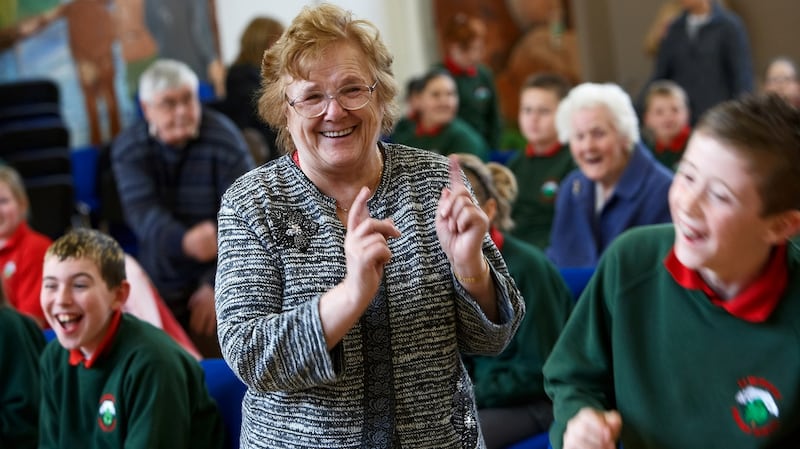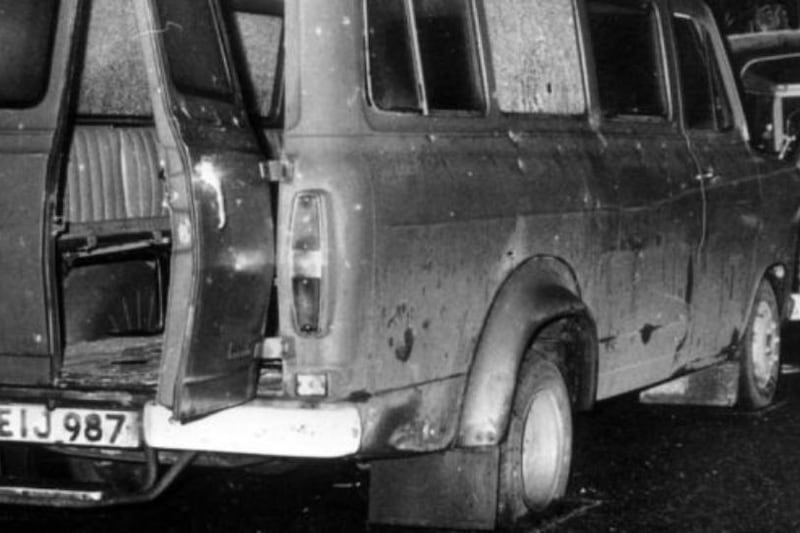It grew out of a project with street children in Addis Ababa; it maintains strong links across Europe; it connects with community dance initiatives in Palestine, South Africa and beyond; and, from its home base in Belfast, it works with some of the most disadvantaged constituencies in the North.
This is DU Dance, a company whose work transforms lives and helps to forge interpersonal connections that might not otherwise have been made. Above all, it makes dance accessible to individuals who, in all probability, would never have had that opportunity.
In official terms, DU Dance is categorised as a “dance development company”, a cold, stiff-backed term which feels more suited to an arts strategy document or a consultation report. As much of the work goes on out of the public gaze, such companies can sometimes feel, undeservedly, like the bridesmaid of the sector. But set aside defining words, and a brave new world opens up.
It is about being much more than a youth dance company and, therefore, it would be wrong to define it as such
Young people are at the core of everything DU Dance touches, but, as its co-founder and artistic director, Mags Byrne, points out, it is about being much more than a youth dance company and, therefore, it would be wrong to define it as such.
Its activities are grounded in youth engagement. Its effects are holistic. Its remit and focus go deep into individual lives, frequently rescuing seemingly irrevocable situations and enabling relationships between generations, across cultural divides, among people of different abilities and experiences, building bridges between mainstream education and young people whom, for a variety of reasons, it has failed.
I have known Mags Byrne for more than 30 years. When we first met, she and Mary Brady, a former director of the Institute for Choreography and Dance in Cork and the Dance Council of Ireland, were working in Belfast as performers and dance makers, as well as teaching and inspiring young people. Both struck me not only as charismatic artists but also as persons committed to trying to make the world a better place.
Orphanages
In the late 1980s, Byrne spent time in Romania, working as a carer in an orphanage for abandoned children with Aids. These were the so-called Ceausescu's children, tied into their beds day and night, locked away out of sight, their horrifying existences revealed only after the fall of the dictator.
By way of communication and stimulation, and in the absence of a common spoken language, Byrne resorted to the one she knew best, the universal language of dance. She used it to make vital human contact with and between these little ones, something which had, for so long, been absent from their young lives.
This life-changing experience set her up to join a production team bound for Ethiopia. Leading the group were a BBC producer, who had been involved in Live Aid and whose intention was to make a feature film about the street children he came across during that assignment, and Royston Maldoom, the highly respected community dance facilitator and choreographer, who had been a major creative force during the early days of Ulster Youth Dance.
Byrne and Maldoom, together with a child psychologist and local community leaders, set about making what started out as a small performance piece with a group of children. It was based on the large-scale Carmina Burana spectacular previously created in Belfast by Maldoom and turned into something much bigger and more significant than they could have foreseen.
Street children
For the next decade or so, the pair expanded their activities with the street children of Addis Ababa. It was a steep learning curve all round, not least in terms of cultural and social mores. Byrne recalls that, whereas boys were enthusiastic and eager to express themselves, there was a real difficulty in getting girls to engage. She noted the contrast with the youth dance sector in Ireland, where, more often that not, it is the boys who hang back while the girls are much more inclined to take an active part.
From those early beginnings sprang a training course in community dance and, five years later, the formation of Adugna Community Dance Theatre – "adugna" means "fate", the central theme of Carmina Burana. Years later, it continues to spread its influence within deprived communities, nationally and internationally, with the first generation of dance artists now bringing forth new generations of young people, artists and companies.
Byrne continues as a mentor and teacher. A few months ago, the dancer and Ethiopia’s first female choreographer, Meseret Yirga, who took part in Adugna’s first performance, came to Belfast to work on three youth engagement projects with DU Dance, returning home armed with new experiences and ideas.

Over the past 17 years she has used dance to support some of the most vulnerable people in her country, including sex workers, disabled people and homeless children.
Far-reaching ethos
This is the far-reaching ethos on which DU Dance was built and developed. Maldoom, who has long been based in Berlin and is a leading figure in community dance in Europe, was instrumental in setting up the European Community Dance network, of which the company is a member. Meanwhile, Byrne is constantly in demand as a community dance facilitator in Palestine, South Africa and across Europe. All these contacts and influences feed into and nourish the work back in Belfast.
The company's slate of programmes falls into four main categories. Building Bridges benefits young people who are socially segregated or marginalised as a result of their cultural identity, social or behavioural difficulties. One of its success stories is the establishment of Sutemos and its junior group Suteminis in the Co Tyrone town of Dungannon. Its membership comprises young local people from many different countries and cultures, some of whom have experienced terrible conflict in their homelands.
These unsung young heroes are blossoming as individuals and forming new friendships with others who share their experiences
A three-year film and dance project aimed at young carers is about to launch into its second phase, in partnership with Barnados NI and Triplevision Productions. These unsung young heroes are blossoming as individuals and forming new friendships with others who share their experiences. When the first film was aired in March, it was intensely moving to witness the pride expressed by parents and siblings for whom they care on a daily basis.
A new project, entitled Care, is about to begin in collaboration with the Falls Women's Centre, uniting newcomer families in west Belfast with the area's long-term residents.
Safe environment
Crossing the Divide focuses on cross-community work, using dance to provide a safe environment in which fear and prejudice can be released. The Merge Cru project targeted young unemployed people living in socially disadvantaged inner city areas, tapping into their interest in urban street dance and involving them in international festivals and major events.
Closing the Gap brings together different generations of dancers, from primary school children to elderly people in sheltered accommodation and residential homes, developing dance-based projects where history, nostalgia and memory play a major part.

Opening the Spectrum broadens horizons through workshops, summer schemes, performances and festivals. The annual Unanimous showcase is getting bigger every year, with groups from across Ireland coming to Belfast for a weekend of camaraderie and dance.
Words like “transformative”, “inspirational” and “life-affirming” readily spring to mind when speaking about the effects of companies such as DU Dance. Last year, I interviewed three former participants, William, Penny and Andy, who recalled with startling frankness their first encounters with the company. The final summing up is best left to them.
William
“I messed up school. I hated it. I couldn’t sit still, couldn’t concentrate. Nobody knew how to deal with me. I’ve suffered from depression since I was eight. I used to self-medicate. I started smoking dope and was taking Ecstasy when I was 12. By second year, I was messing up big time. In the end I expelled myself.
“Society is not a democracy. The government wants to weed out failures, make the country a better place. People get crushed in the system. You’re the collateral damage. I was destroyed by dope. To be honest, I was a little bit mental. DU Dance wasn’t just about dancing. It enabled me to control myself, gave me a lifeline. It’s no exaggeration to say it saved my life.”
Penny
“I left school when I was 15 because I’d been bullied. I was picked on for being smart. I was really depressed and had no confidence. When I met Mags and Royston I was at a very low ebb. I had tried to make myself invisible.
“Working with them on various projects, I started to get my confidence back. I regained hope that I could do what I wanted to do with my life. I found myself being more open, not so shy, not the miserable one hiding in the corner. I started being me. I suppose I found Penny.”
Andy
“I come from a rough area. I was quite angry as a young guy. There was no path in my life. I was running around in the dark. Chances are I’d have been dragged down into drink, drugs, violence, anti-social behaviour. I could have ended up in a paramilitary organisation.
“No way did I ever think I’d find myself working in dance. People around our way don’t do that kind of thing. I still see the same people round and about. I get teased about what I do, but I don’t mind. I don’t feel I have to act the hard lad so as not to get picked on or spat at. I think that secretly some of them are jealous of the places I’ve been, the experiences I’ve had. When people ask what I do, I say ‘I’m a dancer’.”
Jane Coyle has been chairwoman of DU Dance since 2010.


















